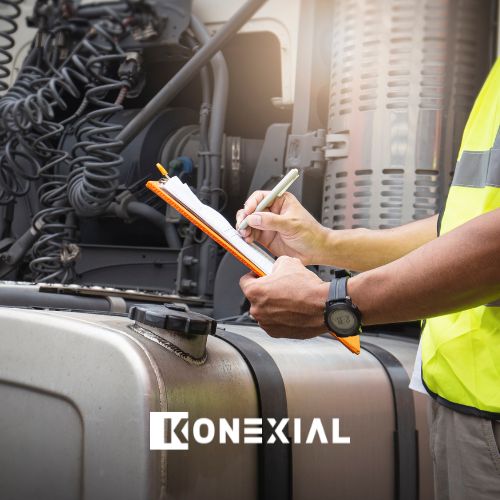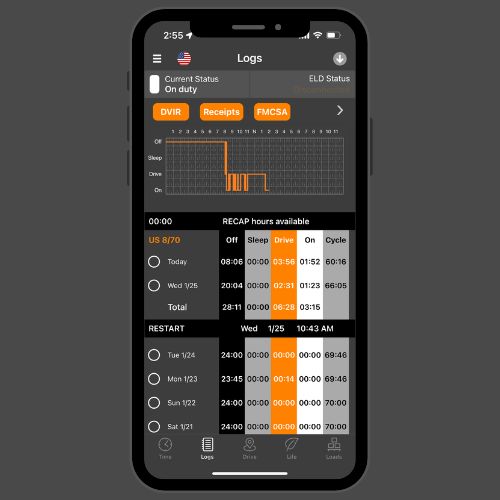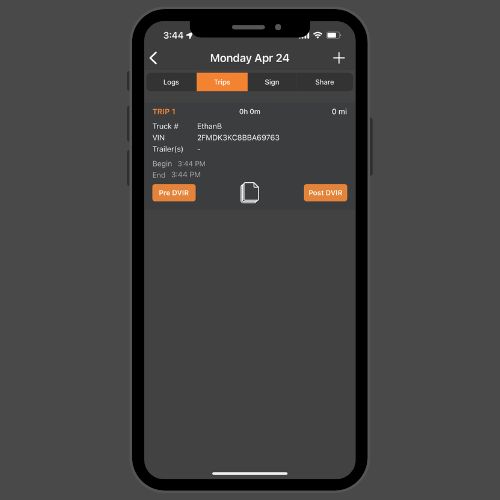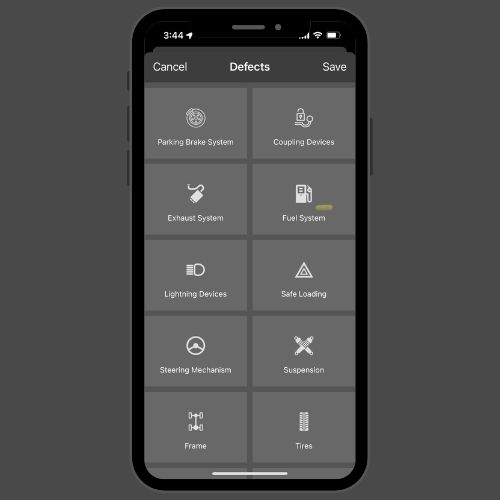What is a DVIR? Its Importance in Fleet Safety and Compliance

What is a DVIR? The Importance of Documentation in Fleet Safety and Compliance
As a fleet manager, safety of your drivers should be your top priority . Ensuring the vehicles in your fleet are operating efficiently and safely is essential for preventing accidents and injuries.
That’s why having a driver’s vehicle inspection report (DVIR) is required by FMCSA as a key part of your driver’s daily routine. Read on to learn more about what this report entails including specific DVIR requirements and their importance when it comes to compliance.
What is a DVIR?
The DVIR is a thorough all inclusive visual walk-around inspection of all of the operating systems of both the truck and trailer(s) to insure that each system is operating properly at the time of the inspection but also does not show any signs of unusual wear and tear that may cause unexpected failure during the upcoming trip.
What does DVIR stand for in trucking?
DVIR stands for “Driver Vehicle Inspection Report.” It is a mandatory pre-trip and post-trip inspection report that commercial truck drivers in the United States must complete and submit to their carrier to maintain safe operations. While carriers are only required to maintain documentation of the post-trip DVIR, new app technology makes documenting the pre-trip AND post-trip DVIR easy.
During the inspection, the driver will inspect various parts of the truck, including brakes, steering, tires, lights, and reflectors, among other things. If any defects or safety violations are found, the driver must note them on the report and submit it to the carrier.
If the defects are serious, the carrier must address them immediately before the truck can be driven again.
What is the importance of DVIR?
The DVIR is an essential part of a trucking company’s safety and compliance program. It helps to ensure that vehicles are in good working condition, drivers are informed of any pre-existing issues, and the company remains compliant with federal regulations. The purpose of DVIR is to ensure that commercial vehicles are in a safe operating condition before they hit the road and after the completion of a trip. This helps to prevent accidents, breakdowns, and delays caused by mechanical problems or unsafe vehicle conditions.
The DVIR is critical for an enterprise fleet management and trucking companies for several reasons:
Safety: The DVIR helps to minimize the risk of accidents caused by mechanical issues. This helps to keep drivers and others on the road safe.
Compliance: DVIR is required by law, and failure to complete it can result in fines and other penalties. Therefore, maintaining proper DVIR records helps a company to remain compliant with federal regulations.
Maintenance: DVIR helps to identify, track, and resolve mechanical issues that need to be addressed. This allows the company to schedule repairs and maintenance, preventing roadside breakdowns and reducing overall maintenance costs.
Liability: In the event of an accident, a trucking company’s DVIR records may be scrutinized. If it is found that the company failed to complete or properly address DVIR reports, they may be held liable for any damages or injuries caused by the accident.
Who is responsible for conducting a DVIR?
The responsibility for the DVIR ultimately lies with the driver, who is responsible for completing the inspection and reporting any defects or safety violations. The driver must sign the report to certify that the inspection was completed and that any defects were either repaired or reported to the carrier.
However, the carrier is also responsible for ensuring that drivers are trained on how to complete the inspection and the proper procedures for reporting and resolving any defects or safety violations. The carrier must also maintain records of all DVIRs and ensure that any defects identified are addressed promptly.
How to conduct a DVIR
Your fleet management platform and ELD should provide the driver with a complete DVIR inspection checklist.



What areas does the driver check during a DVIR inspection?
The driver typically inspects the vehicle’s brakes, steering, tires, wheels, and rims, as well as the exhaust system, lights, and reflectors. They also check the windshield wipers, mirrors, horn, and emergency equipment such as fire extinguishers and reflective triangles. By conducting a thorough DVIR inspection, a truck driver can help ensure the safety of themselves, their cargo, and other drivers on the road.
Why is the inspection important before departure on a trip?
A Driver Vehicle Inspection Report (DVIR) inspection is crucial before starting a new trip because it helps ensure the safety of the driver, the cargo, and other drivers on the road. By conducting a DVIR inspection, a truck driver can identify any potential issues or defects with the vehicle before hitting the road. This allows them to take corrective action or have necessary repairs done before it becomes a safety concern. Regular DVIR inspections can also help prevent breakdowns and other mechanical issues, which can result in costly delays, lost productivity, and even accidents. In addition to promoting safety, conducting and documenting a DVIR inspection is also a regulatory requirement by the Federal Motor Carrier Safety Administration (FMCSA), and failure to comply with these regulations can result in penalties, fines, and other legal consequences.
What penalties are faced for DVIR non-compliance?
The penalties for DVIR non-compliance can be severe for both the driver and the carrier. Here are some examples:
Fines: Failure to complete a DVIR can result in fines for both the driver and the carrier. The amount of the fine can vary depending on the severity of the violation and the number of previous violations.
Out-of-Service Orders: If a driver is found to be operating a vehicle with a serious safety violation, they may be placed out-of-service (OOS) by law enforcement. An OOS order means that the driver cannot operate a commercial motor vehicle until the violation is corrected. OOS order can also affect the carrier’s CSA score.
Suspension or Revocation of Operating Authority: Non-compliance with DVIR requirements can result in the suspension or revocation of a carrier’s operating authority. This can effectively shut down the carrier’s business until they can regain their operating authority.
Increased Insurance Premiums: Non-compliance with DVIR requirements can result in higher insurance premiums for the carrier, which can significantly increase operating costs.
Legal Liability: If an accident occurs as a result of non-compliance with DVIR requirements, the carrier may be held legally liable for any damages or injuries caused by the accident. With escalating “nuclear verdicts” occurring with increasing frequency against trucking companies, motor carriers, and private fleets, it is mission critical to have a robust DVIR process and fleet technology that prevents issues from reaching critical levels.
Looking for a fleet solution to manage your DVIR reporting and more? Contact us today!
Konexial provides superb technology to the transportation industry through the PaaS (platform as a service) model featuring fleet management, video, and safety management, asset tracking, fuel savings programs, and more.
3214 Tazewell Pike Suite 101 Knoxville, TN 37918
865-888-MY20 (6920)
contact@konexial.com







